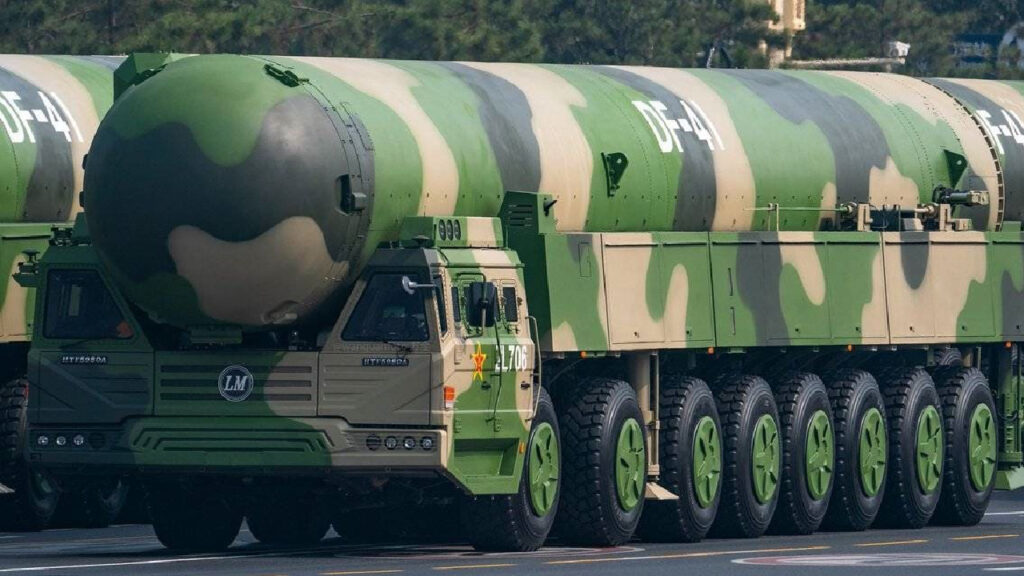World
US Adopts New Approach in Asia Amid China’s Missile Threat
China’s Missile—In this small airport near the tip of the Philippines, U.S. military equipment and troops were stationed during recent training exercises, countering China’s missile threat.
This move away from large military bases, which have been the cornerstone of the U.S. presence in Asia for years, aims to mitigate the vulnerability posed by Beijing’s growing arsenal of technologically advanced missiles.
By dispersing weaponry, troops, and command posts across smaller outposts like Lal-Lo, the U.S. seeks to prevent China from inflicting a decisive blow by incapacitating a single military facility.
“The People’s Liberation Army Rocket Force’s remarkable growth in capabilities in recent years poses a significant threat to fixed bases,” warned Thomas Shugart, a senior fellow at the Center for a New American Security.
The rising military capabilities of China and the U.S. military presence in Asia are key topics at the upcoming Shangri-La Dialogue, a defense ministers’ meeting in Singapore. However, China declined the U.S. request for a meeting between Defense Secretary Lloyd Austin and his Chinese counterpart Li Shangfu.
China currently possesses over 1,300 ballistic missiles, including 250 capable of reaching major U.S. military bases in Guam, around 3,000 miles away. The development of hypersonic missiles by China further emphasizes the vulnerability of U.S. bases in Asia.
Get The New York Times and Barron’s News for $129
Simulations of hypothetical conflicts, including a war over Taiwan, suggest that Beijing would aim to destroy major American installations early on. This includes Kadena Air Base, the largest U.S. air base in the region, located on the Japanese island of Okinawa.
In response, Senator Marco Rubio introduced a bill calling for stronger shelters for U.S. aircraft in Asia, acknowledging the need for improved protection.
However, the U.S. Air Force believes that new shelters alone are insufficient. They prioritize a hub-and-spoke model, where aircraft are relocated from large bases to smaller facilities, particularly in times of impending conflict. Air Mobility Teams, composed of personnel who rapidly convert locations like remote islands into temporary bases, play a crucial role in this strategy.
Increasing the number of small bases in the region allows for quicker deployment and shorter response times, facilitating prepositioning of assets. This approach also benefits missions such as disaster response, given the susceptibility of the La-Lo airfield to typhoons.
While dispersing military forces carries the risk of individual sites having weaker defenses and being vulnerable to missile attacks, U.S. military officials consider the concentration of forces at a few locations too risky. Major U.S. facilities in the Asia-Pacific region are protected by missile-defense systems, but China’s advancing capabilities and those of North Korea pose significant challenges.
China aims to make it difficult for any rival military, especially the U.S., to operate near its periphery through its anti-access/area denial (A2/AD) strategy. This strategy seeks to prevent the U.S. military from accessing conflict areas, such as around Taiwan, and eliminate any opportunity for launching attacks.
Get News WSJ | Wall Street Journal 2-Year Subscription for $129
To counter China’s A2/AD strategy, the U.S. military is implementing measures to ensure its forces can operate effectively. The transformation of the Marines into a force capable of swift strikes from islands in the western Pacific, as well as the establishment of a wider network of operational facilities, are integral to this plan.
The Lal-Lo airfield in the Philippines is one of four new locations where the U.S. has gained access for military purposes, further expanding its presence in Southeast Asia. These sites, including those in the north of the Philippines near Taiwan and the western region near the South China Sea, offer crucial strategic advantages.
While the U.S. cannot build permanent facilities at these sites, they feature
runways and areas for storage and command and control facilities. Additionally, plans are underway to deploy more military assets in Australia and enhance cooperation with Papua New Guinea.
The recent joint training exercises in the Philippines, made possible by increased access to Lal-Lo airport, were among the largest in the region, involving 17,500 troops. These developments reflect the U.S.’s commitment to adapting its military posture in response to China’s missile threat and safeguarding its interests in the Asia-Pacific region.

